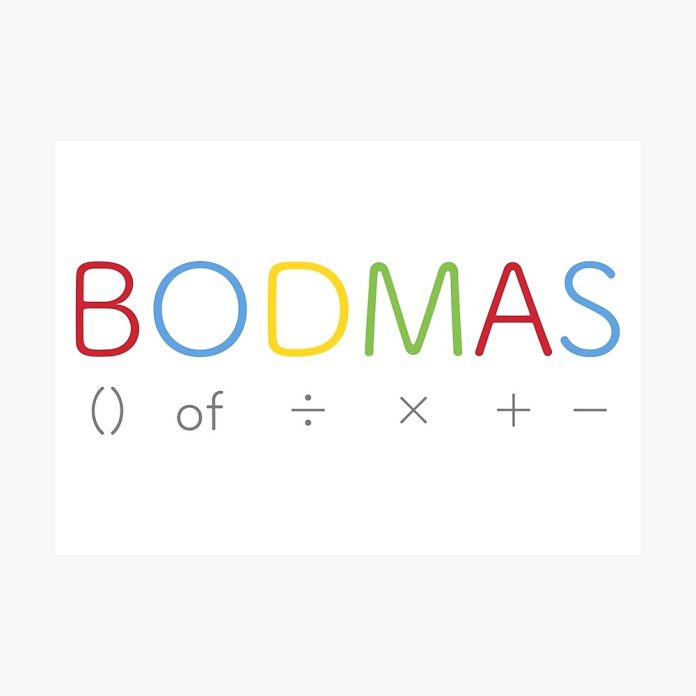BODMAS
Simplification of mathematical expressions is an important part of solving problems. The expressions have multiple operations that need to be performed in a specific sequence or order. There are rules that help us to perform the operations in a particular sequence to solve the problems easily and systematically. BODMAS is one such rule that gives a guideline for performing mathematical operations while simplifying the mathematical expressions.
BODMAS Rule
This is a simple and convenient method that helps us to remember the sequence of operations that needs to be maintained while performing the simplification of mathematical problems. This method is called the BODMAS rule which is the short form to denote the sequence of operations. The term BODMAS is derived by taking the first letter of each operation in the same order in which these operations have to be performed. The full form of BODMAS is:
B – Brackets
O – Order of power or roots
D – Division
M – Multiplication
A – Addition
S – Subtraction
Explanation
- The first operation is with brackets (B) which means any operation that is enclosed within brackets is to be done first.
- The next operation is with the order (O) of power or exponential terms.
- The third operation is with the division (D) and multiplication (M) operations. There is no order in these operations because whichever comes first while going from left to right in the equation is to be done first.
- The last operations are addition (A) and subtraction (S) but not in the given order. Whichever operation comes first between these two while moving from left to right is to be done first.
Points of BODMAS
- B: The first letter indicates operations enclosed in brackets.
- O: The second letter stands for calculation of order of power or exponents.
- D & M: The next two letters means we have to do division and multiplication whichever comes first from left to right of the equation.
- A & S: The last two letters refer to addition and subtraction that are to be carried according to the order that appears from left to right.
Order of Operations
The order of operations refers to the sequence in which different arithmetic operations are to be performed while solving a mathematical expression.
The order of operations defines the sequence of operations that needs to be followed for the simplification of any mathematical expression involving multiple operations. The rule states that the operations are to be done as per the sequence as follows:
1. Brackets
2. Exponents
3. Division and Multiplication
4. Addition and Subtraction
Explanation
- The first operation is to solve the expression present inside the brackets. The order of different types of brackets starts from round brackets ( ), then curly brackets { } and then box brackets [ ].
- The second operation deals with the calculations involving exponents or roots.
- The next operations are multiplication or division operations carried out in the order whichever comes first from left to right in the expression.
- The last operations are addition and subtraction operations to be performed in the sequence from left to right whichever comes first.
Methods of Order of Operations
There are methods that help to learn and remember the order of operation in a convenient and simple way. Two such popular methods are the PEMDAS or BODMAS rule. These two terms are the acronym of operations to be done in sequence.
- The first operation is the parentheses (P) or brackets (B).
- The second operation is the order (O) of power or exponential (E) terms.
- The third operation is a division (D) or multiplication (M).
- The fourth operation is an addition (A) or subtraction (S).
If you want to learn more about the maths concepts in a detailed manner, visit Cuemath to book a free session.





